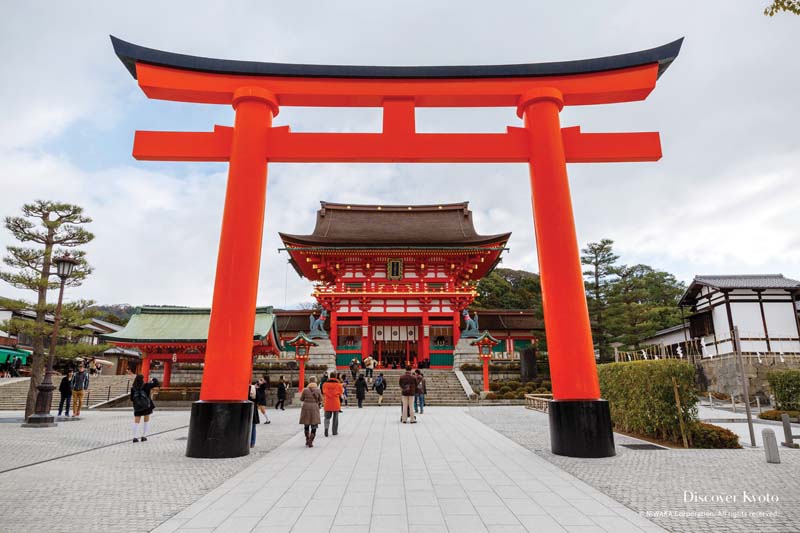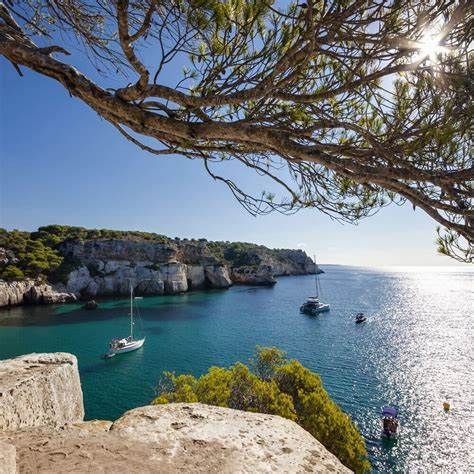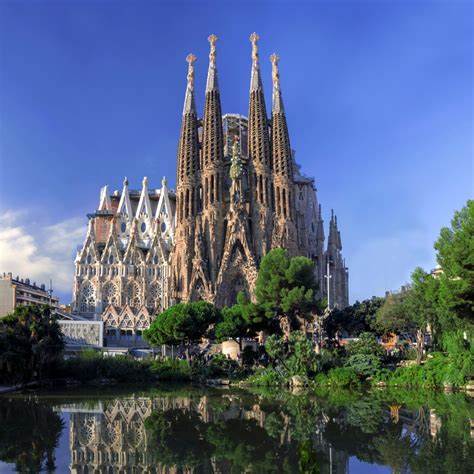Japan is a land of contrasts, where ancient traditions coexist with cutting-edge technology, serene temples are surrounded by bustling cities, and natural beauty stretches from snowy mountains to tropical beaches. Whether you’re an art lover, a history buff, a nature enthusiast, or an urban explorer, Japan has something that will captivate you. Here’s a closer look at the top 10 must-see attractions in Japan, each offering a unique experience that defines the essence of this fascinating country.
1. Admire the Serenity of Kyoto’s Temples
Kyoto, once the imperial capital of Japan, is home to over 1,000 temples, each offering a different perspective on Japan’s religious and cultural history. Among the most famous is Kinkaku-ji, the Golden Pavilion. This Zen Buddhist temple is covered in gold leaf and set against the backdrop of a peaceful pond, creating an iconic image of tranquility. Walking around the temple grounds, you’ll encounter meticulously landscaped gardens and reflective ponds, making it a serene place for contemplation.
Another must-visit is Fushimi Inari-taisha, with its thousands of iconic red torii gates that lead up the mountainside. As you walk through this sacred pathway, you’ll pass smaller shrines and enjoy panoramic views of Kyoto city. Kyoto’s temples, including the Kiyomizu-dera and Ginkaku-ji, the Silver Pavilion, represent the best of Japanese architecture and spirituality, and they each offer a chance to escape into history and serenity.
2. Visit Mount Fuji for Hiking and Views
Mount Fuji is an iconic symbol of Japan, known for its near-perfect symmetrical shape and its place in both Japanese art and culture. It stands at 3,776 meters, making it the highest mountain in Japan. For many visitors, climbing Mount Fuji is a once-in-a-lifetime adventure. During the official climbing season (from July to September), thousands of hikers make their way up the mountain’s well-marked trails. The most popular route is the Yoshida Trail, which starts from the fifth station and ascends to the summit, where you can witness a breathtaking sunrise.
If you’re not keen on hiking, Mount Fuji is still a must-see from various viewpoints around Lake Kawaguchi. The surrounding area offers many other activities, including boat rides on the lake, exploring traditional villages, and soaking in onsen hot springs with views of the mountain.
3. Experience the Bright Lights of Tokyo
Tokyo, the bustling capital of Japan, is a city that never sleeps. Its vibrant neighborhoods, futuristic architecture, and eclectic fashion scene make it one of the most exciting cities in the world. Shibuya Crossing, one of the busiest pedestrian crossings globally, is a must-see when visiting Tokyo. Here, you’ll witness thousands of people crossing in every direction as the neon lights of the city reflect off the glass skyscrapers.
Another must-see area in Tokyo is Akihabara, the mecca for tech enthusiasts and anime fans. Explore multi-story stores selling everything from electronics to manga and collectibles. If you’re interested in history and culture, take a stroll through Asakusa, where you can visit the iconic Senso-ji Temple and shop for traditional goods at Nakamise Street.
For panoramic views of the city, head to the Tokyo Skytree or Tokyo Tower, where you can look out over the sprawling metropolis, especially stunning when lit up at night.
4. Take a Stroll Through Nara Park
Nara, Japan’s first permanent capital, is a peaceful city known for its historical temples and serene landscapes. Nara Park, in the center of the city, is famous for its free-roaming deer that are considered sacred and are treated with great respect by the locals. Visitors can feed and interact with the deer, adding a unique charm to the experience.
The main attraction in Nara Park is Todai-ji Temple, home to the world’s largest bronze statue of Buddha, the Great Buddha (Daibutsu). The statue, measuring 15 meters tall, sits inside the massive wooden hall, which is one of the largest wooden structures in the world. The surrounding park also features beautiful ponds, walking paths, and other historical landmarks, making it a perfect spot to explore and reflect on Japan’s ancient past.
5. Relax in an Onsen in Hakone
For an authentic Japanese experience, head to Hakone, a scenic town located just an hour outside of Tokyo. Known for its natural hot springs, or onsen, Hakone offers many onsen resorts where visitors can relax and soak in the mineral-rich waters while taking in views of Mount Fuji. The area also boasts beautiful lakes, forests, and hiking trails, making it ideal for those looking to unwind in nature.
A visit to Hakone Open-Air Museum, where you can enjoy outdoor sculptures set against the stunning backdrop of the mountains, is another highlight. After relaxing in the hot springs, take a boat cruise on Lake Ashi, where you can enjoy breathtaking views of the surrounding landscape and Mount Fuji on a clear day.
6. Explore the Historic Castle in Himeji
The Himeji Castle, often called the “White Heron Castle” due to its elegant white exterior, is one of Japan’s most beautiful and well-preserved feudal castles. This UNESCO World Heritage site is located in Hyogo Prefecture and offers a glimpse into Japan’s feudal past. As you walk through the castle’s grounds, you’ll pass by moats, stone walls, and traditional gates, leading up to the main keep, where panoramic views of the city and surrounding countryside await.
Himeji Castle is known for its intricate defense systems, including maze-like paths designed to confuse attackers, and its stunning architecture. The castle’s design emphasizes beauty and strength, with delicate rooflines and carefully arranged stonework. A visit to Himeji Castle is an essential part of any historical exploration of Japan.
7. Visit the Peace Memorial Park in Hiroshima
Hiroshima is a city that has risen from the ashes of World War II to become a symbol of peace. The Hiroshima Peace Memorial Park is dedicated to the victims of the atomic bomb, dropped on the city on August 6, 1945. The Atomic Bomb Dome, one of the few structures left standing after the blast, is now a UNESCO World Heritage site and serves as a poignant reminder of the tragedy.
The Peace Memorial Museum in the park offers detailed exhibits on the bombing, its aftermath, and the importance of peace. Walking through the park, you’ll find monuments and sculptures dedicated to the victims, and you’ll leave with a deep sense of reflection on the consequences of war and the importance of peace.
8. Discover the Cultural Heart of Okinawa
Okinawa, the southernmost prefecture of Japan, offers a more tropical and relaxed atmosphere compared to the main islands. Known for its subtropical climate, pristine beaches, and unique cultural heritage, Okinawa is perfect for those seeking a laid-back vacation. Visit the Shurijo Castle, a beautiful fortress that was the seat of the Ryukyu Kingdom, to learn about the island’s fascinating history.
Okinawa is also home to a rich tradition of music, dance, and cuisine. Enjoy fresh seafood, taste local specialties like Okinawa soba, and explore the island’s beautiful coral reefs through snorkeling or diving.
9. Explore the Tranquil Gardens of Kanazawa
Kanazawa, on the western coast of Japan, is known for its well-preserved Edo-period districts and serene gardens. The Kenroku-en Garden, one of the Three Great Gardens of Japan, is a stunning example of Japanese landscape design. With ponds, walking paths, bridges, and seasonal flowers, the garden offers a peaceful retreat and a chance to immerse yourself in the beauty of nature.
Kanazawa also boasts a well-preserved samurai district, where you can wander through traditional houses and experience what life was like in the Edo period. The city is also famous for its geisha districts, where visitors can learn about the art of traditional Japanese performance.
10. Marvel at the Snow Monkeys in Jigokudani
For a truly unique experience, visit Jigokudani Monkey Park in Nagano Prefecture, home to the famous snow monkeys, also known as Japanese macaques. These wild monkeys are often seen soaking in the natural hot springs during the winter months, making for an unforgettable sight. The park is located in a mountainous area and is surrounded by beautiful forests, adding to the charm of the experience.
The snow monkeys’ relaxed behavior in the hot springs makes them an ideal subject for photography, and the park offers a rare opportunity to observe animals in a natural, peaceful setting.
Japan offers a remarkable blend of ancient traditions, natural beauty, and cutting-edge modernity. Whether you’re wandering through Kyoto’s peaceful temples, hiking up the legendary Mount Fuji, or soaking in the hot springs of Hakone, Japan promises a journey filled with unforgettable experiences and lasting memories.





